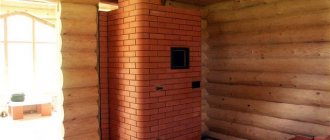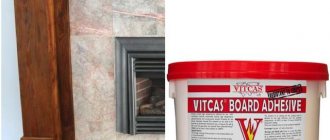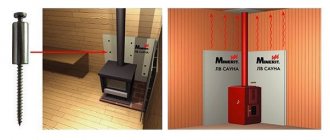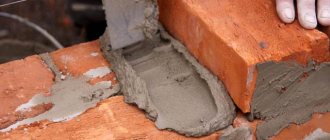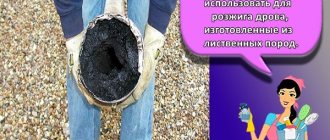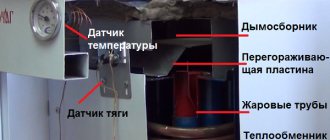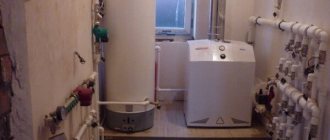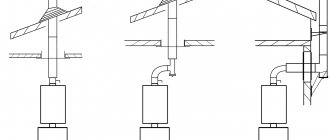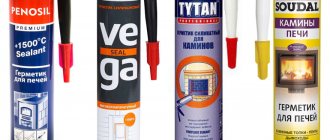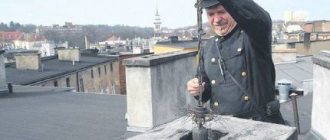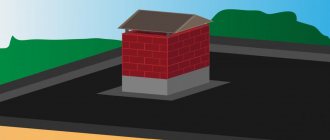Fireplaces and wood stoves are rarely used for heating in modern homes due to the fact that high-tech methods of maintaining heat are much faster, more convenient and do not require as much physical effort. But, despite this, fireplaces do not lose their popularity, creating a unique spiritual atmosphere in country houses or city apartments.
One of the important procedures to ensure the safe use of a wood stove or fireplace is regular cleaning of the chimney. This must be done regardless of the design of the chimney, through the wall or with an exit through the roof. Why should the chimney be cleaned and how often should it be done? How effectively can this procedure be carried out using the Chimney Sweeper log chimney cleaner?
Why do you need to clean your chimney?
To understand why it is necessary to clean the chimneys of stoves and fireplaces from soot, first of all, you need to know what happens in the chimney when using any type of solid fuel material, including firewood. When a fire burns in a fireplace or stove, so-called combustion products, soot and soot, are actively released. All this, together with the smoke, goes up, directly into the fireplace chimneys and settles in a soft, greasy layer on the walls of the chimney. The more time has passed since the last cleaning, the less space remains in the chimney for exhausting smoke and combustion products.
Of course, proper operation, as well as adherence to simple principles for selecting firewood for a stove or fireplace, can significantly slow down this process:
- There is no need to burn anything in the stove (fireplace) except wood. It is better to try to dispose of any household waste, even paper waste, in other ways.
- Choose firewood exclusively from wood species that contain a minimum of resins. This is, for example, dry wood of alder, aspen, oak, and birch. Firewood from fruit trees, which is so loved for the amazing aroma released during combustion, is slightly worse in quality. Experts consider coniferous trees to be outsiders in this list as they emit large amounts of soot due to their high content of natural resins. It is also not recommended to often use poplar and willow, which are not the most expensive but quickly burn out.
- Don't forget about regular cleaning of the blower.
Compliance with all of the above, together with prevention, will allow you to avoid serious chimney blockage for years. But, despite this, cleaning the stove (fireplace) pipe still cannot be avoided. In addition to settling soot, a blockage can form from the outside if debris or a foreign object gets into the pipe. Therefore, professionals involved in chimney repair and cleaning often recommend checking the chimney pipe in the fall and spring.
How do you know when your chimney needs cleaning? The first sign that the procedure cannot be postponed will be a visible deterioration in cravings. The release of the main amount of smoke and smell not through the chimney, but into the room, sparks flying from the fireplace is a signal that the chimney is dirty. Slow and insufficient draft not only creates smoke, but can also lead to intoxication with carbon monoxide components. In addition, a spark flying from the fireplace can cause a fire or injury.
Why else is a contaminated chimney pipe so dangerous? Ignition of accumulated soot can easily lead to cracking and destruction of the chimney walls. The conclusion that can be reached based on all of the above: cleaning the chimney is an important procedure, the thoroughness and regularity of which determines the good operation of stoves and fireplaces, as well as the safety of the home.
Features of cleaning stainless steel pipes
Such chimneys are characterized by high quality internal surfaces. This property allows condensate to flow freely down into the condensate collector, from where it is periodically drained and disposed of. The absence of condensation prevents the formation of soot. But carbon deposits, for various reasons, still form and need to be cleaned. This is done as follows:
- Through the hole in the tee, a round brush on a flexible shaft is inserted into the pipes. Carbon deposits are cleaned by rotating the brush from an electric drill. As you move, the drive shaft increases in length to clean the entire length of the pipe.
- If the carbon deposits are persistent, cleaning can be done by burning them out using a blowtorch. To do this, it is necessary to dismantle the chimney and burn it out. At a temperature of 800-900 degrees, sufficient for the intended purpose, even tarnished colors will not appear on a high-quality stainless pipe.
- After cleaning is completed, it is advisable to insulate the chimney riser in order to move the dew point outside the chimney.
You should pay attention to the quality of stainless pipes. The described option is only suitable for austenitic stainless steel. If you were sold pipes made of ferritic or semi-ferritic steel, they most likely will not have the required performance qualities. Determining compliance is simple - normal stainless steel is not magnetic.
The need to clean the inner surface of sandwich pipes does not arise often - condensate flows out of them regularly. But if you suddenly need to carry out this procedure, then you need to use an elongated cylindrical brush on a flexible drive cable that receives rotation from an electric motor.
You can also disassemble the chimney and clean each pipe separately.
Cleaning the chimney from tar deposits
Some fuels form viscous components from condensate and low-flammability creosote components. They are very difficult to fight and difficult to clean.
To reduce the likelihood of the formation of such precipitation, the chemical preparation “Hansa”, which is a crystalline substance, is used. It has a complex composition, one part of which promotes the decomposition of wood into resin and water vapor, and the second part decomposes the resin into flammable components, which burn here. Previously deposited tar stains on the walls of the chimney also decompose into small crystals and fall into the firebox.
"Hansa" is loaded into a burning firebox. At the beginning of the heating season it should be used daily, then periodically. Details on the packaging.
Cleaning a curved chimney from soot
Installing a chimney with a bend is the last solution worth turning to. This is mainly due to the design features of the house. Cleaning a pipe elbow is not difficult if you have taken care in advance of installing inspection hatches during installation.
Through them, the pipe can be cleaned without much difficulty. However, it is not advisable to install more than two bends on one chimney. It is mandatory to install a cleaning hatch.
Cleaning the chimney of a gas boiler or water heater
The reason for performing such an operation will be a decrease in traction. This poses a considerable danger, especially when it comes to fitting into an apartment building. In such a situation, not only the residents of one apartment are at risk.
The pipe will not determine the reduction in thrust. The signal may be the “popping” of the igniter. Cleaning the chimney of a gas water heater is similar to cleaning a conventional stove duct.
Cleaning methods
Depending on the means used to clean the chimneys of stoves and fireplaces from soot, all methods for removing dirty sediment from a chimney pipe can be divided into three groups:
- The oldest known method is mechanical, also known as traditional chimney cleaning. The procedure is carried out using special “chimney sweep tools”: various brushes and a “core”, a cable with a heavy load to break through the blockage. Despite the outward primitiveness, such cleaning of soot from chimneys of stoves and fireplaces gives the best effect and allows you to cope with the most advanced types of chimney pipe blockage.
- Thermal cleaning is also a fairly old method that has been proven over the years. It consists of “burning out” the soot by heating it with well-dried pine wood. Technically, lighting a fire and waiting for the result is the easiest and least expensive way. But it is also the most dangerous: with a large accumulation of soot, a fire in the chimney is practically a small explosion. A pipe, especially one made of brickwork, that has small cracks may simply fall apart. Therefore, experts advise using this method only as a preventive measure, provided that a large amount of soot and soot has not had time to settle in the chimney pipe.
- Chemical (non-mechanical) cleaning. When considering the use of such a product as a “Chimney Sweep” log for cleaning a stove (fireplace) chimney, reviews of which can be found on most construction forums, it is worth taking a closer look at chemical methods. The use of chemical properties of substances to dissolve or dry soot in a chimney began many decades ago, with the so-called folk remedies. For example, the most famous life hack, invented by our great-grandfathers, is burning potato peelings. Also, the chimney was often cleaned by pouring ordinary salt onto the hot firewood. Today, along with folk remedies, a huge number of modern products from chemical laboratories have appeared in stores, designed for cleaning chimney chimneys in a non-mechanical way. Such products are produced in the form of pressed bars (or logs), as well as in the form of dry powdery masses. What distinguishes modern “chemistry” from traditional methods is the need to strictly follow the instructions and adhere to the dosage, as well as a smaller amount of substance used at a time.
Chemical cleaning products include the Chimney Sweep log, which is often recommended on construction sites on the Internet. What is this product and how should it be used to effectively get rid of soot deposits in the chimney?
Video presentation - how the chimney cleaner works
After this period, it is necessary to clean the chimney elbow and the chambers where soot usually collects - there can be from three to five of them, depending on the design of the stove. Using a vacuum cleaner or fireplace brush, remove all deposits from the stove damper, since it must open and close freely - this is very important for the safety of residents.
When purchasing such products, you should definitely study the instructions on the packaging regarding the technology for using this product and its composition, especially if it is based on chemicals. You also need to know that not every product is suitable for your heating device, so you should pay attention to all the nuances, for example, what chimney designs it is intended for.
We suggest you familiarize yourself with: A deflector or umbrella for the chimney
Log "Chimney Sweep": what is it
What is a patented non-mechanical chimney cleaning product? Its brand name is “Log Chimney Sweeper” (reviews of this product are given below). Externally, it is a pressed block, measuring 25x8x6 cm, wrapped in a protective paper wrapper. Sold in original packaging containing product information and procedure instructions.
The product is recommended for cleaning stove and fireplace pipes of any type, even those of complex design, such as a curved chimney through a wall. The substances that make up the logs, when burned, release volatile chemicals that enter the chimney along with smoke and hot air and affect the layer of soot accumulated there. As a result of this, the contaminants in the pipe dry out and fall off the walls of the chimney.
The Chimney Sweeper log is intended for fireplaces or stoves using coal or wood raw materials. It is strictly forbidden to use this product in ovens equipped with special devices, as well as those operating on gas or electricity.
Important! The question often arises as to whether a product such as a Chimney Sweeper log can completely replace mechanical cleaning. Reviews from professionals about this product warn: such cleaning can only be of a preventive nature. Using logs for a long time eliminates the need to contact a specialist who cleans the chimney. However, it is not possible to completely abandon mechanical cleaning.
Composition of the “Chimney Sweeper” product
The Chimney Sweeper log is declared by the manufacturers as a product that is safe for humans and pets. In the composition of artificial logs:
- Coal wax (small content of coal dust).
- Natural wood sawdust.
- Natural substances: urea and amorphous silica.
- Ammonium sulfate is a substance that is essentially a compound of sulfuric acid and is actively used for industrial needs. Including for the purpose of disinfecting water in city water supply systems.
- Sodium sulfate (anhydrous), another commonly used sulfuric acid compound (sodium salt). In addition to industrial purposes, this substance is officially a food additive, and was previously used in pharmacology.
- Substances in the composition that may cause concern are phosphorus oxide and zinc chloride: in concentrated form, both are contraindicated for contact with the mucous membranes of the eyes and human skin. Therefore, there is no need to remove the log from its protective paper casing. Better yet, protect yourself with regular rubber gloves.
Is it necessary to put firewood together with Chimney Sweeper logs?
The use of the “Chimney Sweeper” product is completely acceptable without “support” in the form of coals or wood firewood. However, hot coals left over from the previous fireplace firebox (stove) or dry firewood placed before cleaning the chimney using a Chimney Sweeper log will significantly enhance the effect of using this product. When cleaning the chimney with a “Chimney Sweeper” log in combination with firewood (coals), a block of the product is laid out on top.
Forbidden! Burn more than one log in combination with hot coals.
Instructions for use
How to use the Chimney Sweeper log correctly and safely? The instructions are located on the branded packaging of the product:
- Remove the log from the original packaging without unwrapping the protective wrapper and place it in the firebox. Burn the paper wrapper on both sides.
- In a closed oven, you should close the door flaps; in a fireplace, use a protective grill.
- Wait until the bar burns completely (about 90 minutes).
- The remains (ash) of the bar should be left in the fireplace for the entire period of use, about 1-2 weeks. During this time, you can use the stove (fireplace) as usual.
- After the procedure, it is recommended to ventilate the room.
The last stage of cleaning
Providing detailed recommendations on how to use the Chimney Sweeper log, the instructions for use contain a detailed description of the mandatory cleaning stage - removing waste from the elements of the fireplace or wood-burning stove.
You will need to thoroughly clean the stove (fireplace) two weeks after using the Chimney Sweeper log product. During this time, all active substances will have time to have the maximum possible effect on deposits in the chimney. The soot, softened under their action, falls down.
At this stage, it is important to remove the fallen soot from the chimney pipe elbow, the smoke damper firebox and other accessible elements of the fireplace (stove); the chimney will need to be inspected again. Cleaning is especially necessary for fireplaces with curved chimney channels, otherwise remaining soot may clog the chimney.
To remove cleaning waste, tools that are accessible to everyone are well suited: a vacuum cleaner and a regular fireplace brush.
Mechanical cleaning
Adaptations
Mechanical cleaning is used for large build-ups in the canal, and it will require some equipment: a brush, scraper, brush, weight, cable, flexible shafts and flexible rods.
Cleaning accessories
- A scraper is needed to clean soot from accessible areas of the chimney.
- The brush and brush are lowered on a cable, at the end of which a weight is attached.
- A core or weight is also needed to break through a channel if a blockage has already formed in it due to debris or soot deposits. The size of the weight should be large enough (occupying approximately two-thirds of the channel cross-section) and it should have a substantial weight.
- A weight, brush or brush is attached to the cable using reliable carabiners.
Sometimes one of the devices is enough, but more often you have to use several of them.
How much product is needed for one cleaning?
Another question that may arise for a person using the Chimney Sweeper for the first time: how many logs should be burned at a time for more effective cleaning? Manufacturers recommend burning one log for regular cleaning, and two logs for wide chimneys, but one after another, not simultaneously. Laying two logs in one burn is allowed for the first cleaning or removal of a large layer of settled contaminants. But this should be done carefully, observing all fire safety measures.
How often should cleaning be done using Chimney Sweeper logs?
It is recommended to carry out the cleaning procedure regularly, at least twice a year. The frequency of cleaning largely depends on how often the stove or fireplace is used. For example, if the fireplace is lit once daily, it is enough to carry out preventive cleaning twice a season, using one block each time. If the fireplace (stove) is lit no more than once a week, one log for the heating season is quite enough.
Benefits of using a log chimney sweep
Due to regular burning of wood, soot and soot accumulate on the walls of the heating system. Gradually, this leads to a narrowing of the outlet channel and a thick layer of resinous substances and ash on the internal walls of the system. If you ignore these points, the situation may get worse. The soot inside can ignite at any time. At the same time, small sparks and lights will fly out of the fireplace. Needless to say, such moments will lead to a fire?
Regular cleaning will help avoid fire and protect the entire chimney system from unplanned escape. In particular, the special “Chimney Sweeper” log has proven its effectiveness. Please note that the log is only suitable for devices that burn wood and coal. To clean gas units, it is necessary to choose other means.
It is necessary to use logs to clean chimneys without waiting for a visible deterioration in draft. Experts recommend using the drug as a preventive measure for blockages 1–2 times during active use of the heating device. After use, there is a restoration of draft and an increase in heat transfer from the stove or fireplace.
Reviews of the chimney cleaner
Of course, no matter what the manufacturer says on the official website, it would be wise to listen to the opinion of homeowners who have tested this chemical in practice. What do reviews on repair and construction forums say about the effectiveness of the “Log Chimney Sweeper” product?
- Based on the experience of homeowners who clean a stove chimney using this product, it makes sense to inspect the chimney for damage or cracks before the procedure. The temperature of soot burning when using chemical logs is so high that it can pose a risk of destruction to a faulty chimney.
- After burning, an unpleasant chemical smell lingers in the room for several days.
- If the pipe (chimney) is heavily contaminated with soot, a log will not help. Experts recommend mechanical cleaning at least 1-2 times a year. In a chimney in which soot has accumulated for several years, a log can have the exact opposite effect: the dirt will collapse and clog the chimney.
- There is an opinion that the Chimney Sweeper log is no different in effectiveness from potato peelings. The only difference is that where one bar is enough, you will have to burn at least half a bucket of potato waste.
- Sometimes specialists who professionally clean chimneys warn about the danger of purchasing a counterfeit of this fairly well-known product. At best, using a “counterfeit” simply will not have the desired effect; at worst, the substances from which the “fake log” is made can have a harmful effect on the health of the homeowner. You should look for a certificate from the store that sells the Chimney Sweeper log product.
Chimney cleaning with folk remedies
But what to do if you don’t have the opportunity to go to the store for chemicals to remove combustion residues? In this case, you can use folk remedies that have been showing their effectiveness in cleaning chimneys for decades. The simplest option is to use rock salt.
They cope much better with soot and plaque on the walls of potato peelings. The process of using them is very simple: heat the oven well and throw a bucket of peelings into the fire, maybe even pieces of potatoes. The soot will decompose under the influence of the resulting steam - small particles will fly up, and larger ones will remain inside. All you have to do is remove their remains.
An excellent tool in the fight against plaque in the chimney is aspen firewood. To remove soot, simply burn a few armfuls of wood. However, in this case you need to be careful, since cleaning with wood leads to the formation of high temperatures, as a result of which the soot will begin to ignite.
We introduced you to the basic means and methods for cleaning soot from a chimney. We hope our recommendations will benefit you and your fireplace.
There are several traditional methods of the cleaning process. Many homeowners stop at them because they don’t trust newfangled methods. It should be noted that they have shown their effectiveness, as they have been used for decades.
- One of the most well-known preventive methods, used very often, is to sprinkle firewood with salt while the hearth is burning. But this method is only good as a preventive measure and will not help get rid of serious problems.
- A well-known method among stove makers to directly remove plaque is to burn potato peelings. They perfectly help rid the chimney of soot build-up.
First, the stove is lit and warmed up well, and only when the fire is actively burning, potato skins or finely chopped potatoes in the amount of one bucket (at least half) are poured into the firebox. The fumes that will emanate under the influence of high temperatures contain starch.
As they rise up the chimney, they will peel off the soot, and small particles will go with the smoke into the chimney, and larger pieces, under their own weight, will fall into the firebox and are removed along with the ash after the stove has cooled. But the pipe will not be completely cleared of deposits, especially if the deposit has reached large sizes, but it will soften well. After this, using a special brush, the chimney is processed mechanically.
One of the types of brushes used
- It is good to clean the chimney with aspen or alder firewood. If you burn several kilograms of wood at once, they will not only bring warmth into the house, but at the same time rid the stove of soot deposits.
It is very important to proceed with extreme caution, as the heat from the large amount of wood burned will greatly heat the deposits in the pipe, and they can ignite. Therefore, this method is suitable in cases where the plaque layer is not too thick, the pipe is quite reliable, and there are no buildings made of flammable material or other fire-hazardous objects near the house.
- Another cleaning method is using naphthalene, which can be used if the pipe has no cracks or damage.
A tablet of this substance is thrown into a burning furnace. When it begins to emit fumes, the soot will lag behind the walls and come out in small pieces along with the smoke. But, naphthalene has a specific smell, and it cannot be avoided from getting into the premises, and this must be taken into account.
- A cleaning method using a composition containing copper sulfate has long been used. This mixture consists of powdered coke, saltpeter and vitriol, mixed in proportions of 2:7:5. The amount of this composition is taken at the rate of 20 grams per 100 kilograms of firewood, i.e. Very little is required. The mixture is added to a heated, burning stove and the firebox door is tightly closed. This composition cannot be used in an open fireplace.
Sometimes the chimney is brought to this state
- A safe and relatively simple way to get rid of soot deposits is to use very hot water. You only need three liters. Water is carefully poured into the pipe from above, splashing onto the walls of the chimney, and then the stove is lit. The fumes should destroy the structure of the soot, and the gas coming from burning wood will help destroy the unpleasant smell of burning. This option is used if the pipe passage is almost completely closed. By using this method, you can see how soot will fly out along with the smoke while firing the furnace.
Here's what should happen ideally:
